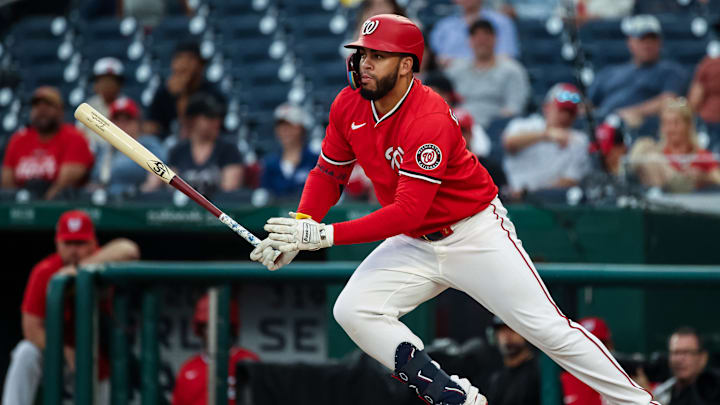There is an intrinsic quality of chance that goes into the game of baseball. It's why we measure things like catch probability and BABIP. The best hitter in baseball can step into the box, hit a screaming liner, and be caught out on the fly. It's part of what makes baseball so compelling; the game has parity built into its very foundation. We do, however, tend to forget this truth at times, and base our assertions of players on the outcomes they produce; two months, to the brain of a baseball fan, feels like long enough to figure it out at the plate, after all.
When trying to measure how unlucky a player has been in the batter's box, one way to do so is by looking at the difference between their wOBA and xwOBA. wOBA, short for "Weighted On-Base Average," is a shorthand number intended to supplant traditional on-base percentage by factoring in the method by which a player reaches base; a home run supplies a more substantial increase to one's wOBA than a single does, and a single is slightly more valuable than a walk. It's the metric that serves as the foundation for wRC+, which is a scale I use frequently in my pieces.
xwOBA, in turn, is "expected" wOBA; in a word, it uses Statcast data to approximate a player's wOBA based on the quality of their contact, rather than the actual results of balls hit into play. All this is to say that generally if a player's xwOBA is higher than their true wOBA, they are, by some measures, getting unlucky, as the outcomes of the balls they hit into the field of play have been worse than what typically comes from other balls hit with the same launch angle and exit velocity.
Baseball Savant, the primary way MLB offers to view extensive Statcast data, provides a list of how players are performing relative to their expected wOBA. At the forefront of names putting up pedestrian numbers relative to the quality of their plate appearances are some names you might recognize: Juan Soto, Bryan Reynolds, and Corey Seager are all underperforming what you might expect them to do given the way they've hit the ball this year. But right there, at 11th on the list, is none other than Nationals second baseman Luis García Jr.
For those who have followed the team this year, it's probably not a surprise to find out that García has been, by some metric, the 11th unluckiest qualified hitter in baseball this year; after breaking out to the tune of a .328 wOBA last year (and having the best offensive season of any National that campaign), García started the year putting up similar if not better quality plate appearances than in 2024; yet, he ended the month running an 82 wRC+ (.288 wOBA).
In the time since then, that wRC+ has climbed to 103, a few ticks above league average. Even that doesn't tell the true story: García's wOBA is still an entire 60 points below his expected value. García's xwOBA is second among National League second basemen, but his actual results have him around 6th. That's the difference between making and missing his first career All-Star Game.
Things are turning around, though, and his patience has paid off: García has run an .835 OPS this month, good for a 134 wRC+ and .364 wOBA, and it looks like he's finally settling in. The defense, yes, is a concern of its own, but García finally getting the results he's been working towards is a huge boon for a Nationals squad that desperately needs things to go their way after dropping 12 straight earlier this month, three of which came against the cellar-dwelling Rockies. Sometimes, a little peace of mind goes a long way.
